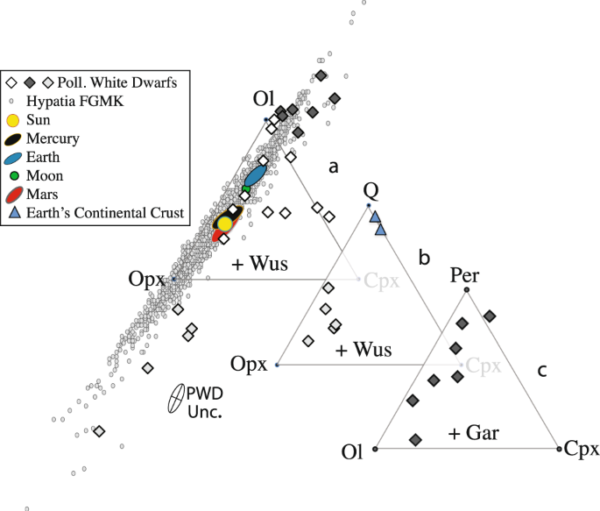Obtaining the composition of rocky exoplanets from the spectral signature produced when their dying parent star eats them is already pretty mind-blowing. But the results – which suggest that on some of these worlds, quartz is substituted for olivine in their mantles? That’s a mind-supernova.
I’m not even sure how you could get such a composition – coalescing from a particularly iron poor planetary nebula, perhaps? But given how Earth’s mantle is dominated by olivine and its pressure-induced phase changes, there could be profound differences in how an olivine-free mantle convects and loses heat.
As this figure from the paper shows, the data also point to another kind of rocky exoplanet rich in periclase (MgO) rather than orthopyroxene. In other words, a significant non-silicate phase!

So what does this mean? The authors suggest that “quartz-rich mantles might create thicker crusts, while the periclase-saturated mantles could plausibly yield, on a wet planet like Earth, crusts made of serpentinite.”
Of course, there are some sizeable (acknowledged) caveats, given the rather extreme detection method. We’ll have to see whether these inferences stand up to scrutiny. But it’s yet more evidence that beyond our solar system, many surprises about the way planets work await.
[This post was collated from this Twitter thread]



Nice plan for content warnings on Mastodon and the Fediverse. Now you need a Mastodon/Fediverse button on this blog.